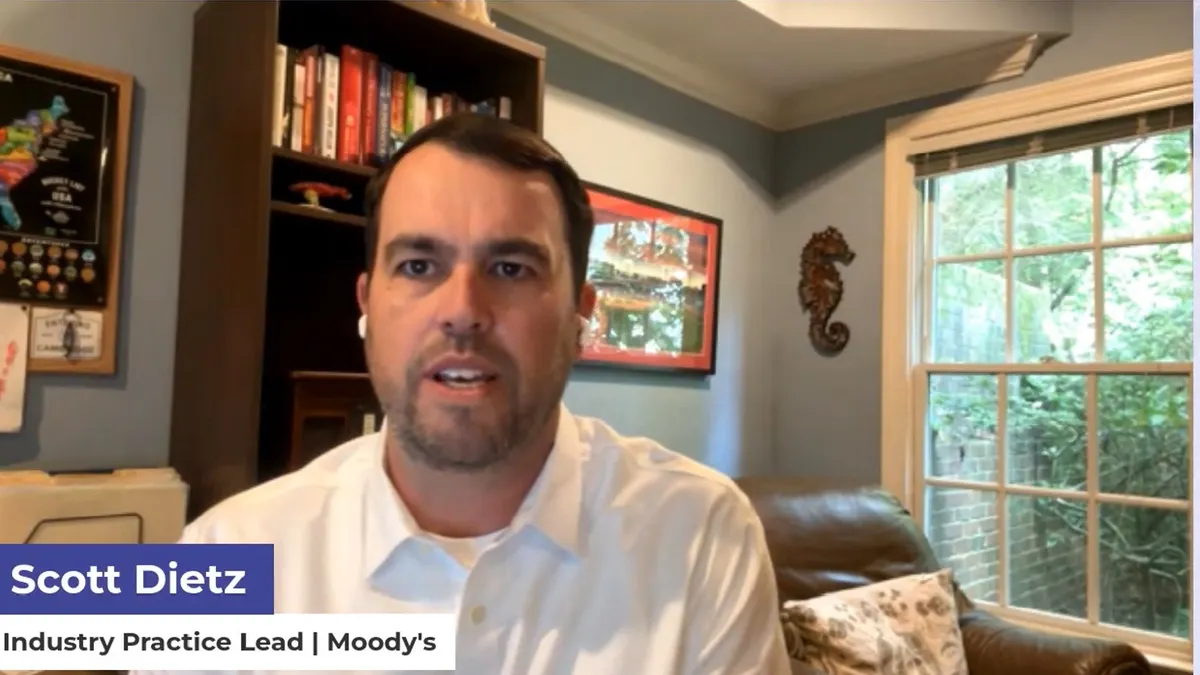For CFOs and finance team leaders, the pressure to deliver more value with fewer resources is relentless. Retirement plan management—often a top-three employee benefit—has become a focal point, as organizations navigate rising costs, complex compliance, and growing expectations from employees and regulators alike. Many employers still manage their 401(k) plans in isolation, bearing the full weight of administration and risk without the advantages of scale. Today, as regulatory scrutiny and litigation intensify, and employees demand stronger retirement security, the traditional standalone approach is being tested as never before.
The Retirement Plan Challenge
Financial anxiety and retirement preparedness are real concerns: 40% of U.S. households are projected to run out of money in retirement.¹ Employees increasingly look to their employers for support, with over half believing that helping them save for retirement is a company responsibility.² Meanwhile, finance and HR teams are stretched thin—84% of companies see rising costs as their biggest benefits challenge³ and lack of time and dedicated personnel was cited as a top barrier to HR departments achieving their priorities by 58%.⁴
Against this backdrop, standalone 401(k) plans are especially vulnerable. Limited scale often means higher administrative and investment costs, and internal teams spend significant time managing compliance, audits, payroll integration, and plan oversight.
Harnessing Scale for Greater Impact
The SECURE Act and SECURE 2.0 introduced Pooled Employer Plans (PEPs), offering a new path forward. By pooling resources, unrelated employers can share the burdens of plan management, compliance, and investment oversight. PEPs have quickly gained traction, managing $9.4 billion in assets and serving over 1 million participants by the end of 2023, with projections nearing $25 billion by the end of 2025.⁵
The Aon Pooled Employer Plan, for example, has surpassed $5 billion in assets and serves more than 100,000 eligible employees across 130+ employers—more than doubling assets in just two years.⁶ Participating employers have realized average plan cost savings in the 30% range.⁷ Investment expense ratios are 55% below those of the respective peer universe median,⁸ based on asset-weighted analysis.⁹
These efficiencies are possible because PEPs use collective bargaining power to secure lower fees and improved pricing as more employers join.
Flexibility Without Compromise
A common misconception is that PEPs require employers to sacrifice plan customization. In reality, leading PEPs offer both scale and flexibility. Employers retain control over key plan features—matching and profit-sharing formulas, eligibility criteria, vesting schedules, and loan provisions—ensuring alignment with workforce demographics and business objectives. Employees benefit from institutionally priced investment options, including active and passive funds, target date solutions, and self-directed brokerage windows, all overseen by experienced fiduciaries.
The Hidden Costs of Going It Alone
Resource constraints are a persistent challenge. In pooled arrangements, much of the day-to-day administration—including compliance, payroll integration, and participant education—is handled by experienced professionals, freeing up internal resources for strategic initiatives. Employers in the Aon PEP, for instance, have reported saving over 50% of the time previously spent on 401(k) management.⁶
Cost and Administrative Efficiency
Thirty percent of plan sponsors say simplifying administration and compliance is their top reason for exploring PEPs; nearly twenty percent cite reducing investment and administrative costs.¹⁰ As more employers join a PEP, the combined headcount and asset base increase bargaining power, resulting in further savings and efficiencies for all participants.
Reducing Risk and Strengthening Governance
The risk landscape is also intensifying: excessive fee litigation surged by 35% in 2024, with 520 lawsuits since 2016 and over $1.1 billion in settlements since 2020.¹¹—many targeting plans under $1 billion. Most organizations lack the specialized expertise to keep up. PEPs transfer much of the day-to-day fiduciary and operational risk to experienced professionals, reducing liability and the need for deep internal expertise.
Considerations for CFOs
While PEPs offer compelling cost, efficiency, and risk management benefits, it’s important to evaluate potential transition complexities, provider quality, and ongoing governance needs. A careful due diligence process—assessing service models, investment lineups, and fiduciary support—will ensure alignment with your organization’s goals.
A New Era for Retirement Security
The adoption of PEPs marks a fundamental shift in how organizations support employees’ financial futures—moving from fragmented, resource-intensive management to collective solutions that improve efficiency, value, and security. As more organizations embrace pooled models, and as market leaders help set new standards for both flexibility and scale, the industry is poised for continued growth and innovation.
Is your organization positioned to leverage the power of scale—and deliver stronger retirement security for your workforce? Now is the time to evaluate whether a pooled approach could be the right strategic move for your benefits program.
Sources
- Morningstar Center for Retirement & Policy Studies. Beyond the Retirement Crisis Headlines: Why Employer-Sponsored Plans Are the Key to Retirement Adequacy for Today’s Workers. 2025.
- Aon plc. Employee Sentiment Studies, 2024 and 2025.
- CFO.com. “84% of Companies See Rising Costs as Their Biggest Benefits Challenge: Costs Displace Talent Management as the Top Benefits Decision Driver.” 2025.
- Society for Human Resource Management (SHRM). 2023–24 SHRM State of the Workplace Report. 2024.
- Georgetown Center for Retirement Initiatives. "Are PEPs Reshaping the Retirement Plan Market?" 2025.
- PLANSPONSOR. "Aon PEP Surpasses $5B in Assets and 100K Participants." 2025.
- Aon plc. "Combating Inflation and Market Volatility with Pooled Employer Plans (PEPs)." 2025.
- eVestment Alliance; Morningstar. Peer universes are provided and calculated by eVestment Alliance, as of July 31, 2024. Peer universe fund expense information has been sourced from eVestment for all asset classes (Passive and Active) except the Target Date Fund universe, which uses Morningstar databases. For those Target Date Funds with multiple share classes through Morningstar, AIUSA selects the share class with the lowest cost option for purposes of the peer universe. For the eVestment data, managers provide only a single “rack rate” for each asset class. Information provided by third-party sources is believed to be reliable and has not been independently verified for accuracy or completeness and cannot be guaranteed.
- Aon plc. 55% on an asset-weighted basis (assets as of June 30, 2025); 45% on an unweighted basis.
- Optavise. Employer Report: Survey Highlights Challenges and Opportunities Among Benefits Professionals. 2024.
- PLANADVISER. "401(k) Excessive Fee Litigation Spiked to ‘Near Record Pace’ in ’24." 2025.










